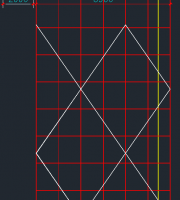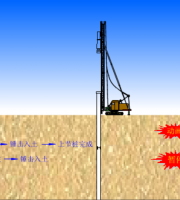There are five important control points in construction site management: safety management, quality management, schedule management, material management and civilized construction management
.
1、 Safety management 1
.
Main contents for construction enterprises, the contents of safety production management mainly include: safety policy and objectives, safety management organization and network, safety production responsibility system, safety rules and regulations, safety production operation procedures, project safety planning, hazard identification, risk assessment and control, safety training and education, safety technical measures Safety inspection, safety standardization, safety culture and safety activities, accident investigation and handling, safety information, safety statistics, etc
.
Among them, safety culture, safety legal system, safety responsibility, safety technology and safety investment are collectively referred to as the “five elements” of safety production
.
It includes the following four aspects: (1) safety production management system; At present, there are eight mature safety production management systems: ● safety production responsibility system– Core ● safety education system– Special operation (climbing, electrician) – three level safety education (company level, department level, team level) ● safety inspection system; Safety measures plan system; Safety supervision system; ● handling system for statistical reports of casualty accidents and occupational diseases; “Three Simultaneities” system; Production safety law stipulates: safety management of new construction, reconstruction and expansion projects of production and business operation units Facilities must be designed, constructed and put into production and use at the same time as the main project
.
Safety pre evaluation system( 2) Hazard identification and risk assessment; According to the role of hazard sources in the occurrence and development of accidents, the hazard sources are divided into two categories: ● the first category of hazard sources
.
The first category of hazard sources is the physical essence of accidents
.
Generally speaking, the greater the energy of the system, the more dangerous substances there are, the greater the potential danger and harmfulness
.
For example, after the equipment is electrified, the electric energy of the charged conductor, the kinetic energy of machinery and vehicles in daily construction, and all kinds of radiation energy, etc
.
The second type of hazard is mainly reflected in equipment failure or defect (unsafe state of objects), human error (unsafe behavior of human) and management defect
.
The unsafe behavior of human can be summarized as operation error, ignoring safety, ignoring warning and causing safety device failure; Using unsafe equipment; Using hands instead of tools to operate; Improper storage of objects; Venture into dangerous places; Climbing and sitting in unsafe positions; In the operation or occasion where personal protective equipment must be used, its use should be ignored
.
The unsafe state of objects is the state that the energy of objects may be released to cause accidents, which is called the unsafe state of objects
.
In the production process, the unsafe state of objects is very easy to appear
.
For example, the damage of cable insulation will cause electric shock; The looseness of lining ring and splint will lead to the unreliable connection of steel strand and cause the safety of personnel and line
.
Unsafe environmental conditions there may be unsafe factors in the surrounding environment of the construction site, such as natural disasters, electric shock, falling objects, etc
.
Management defects include safety training and education, safety disclosure, supervision and inspection, summary and analysis, etc( 3) Safety technical measures; I
.
construction safety control procedures: ① determine the safety objectives of each specific construction project; To realize the safety control of the whole staff through the “management by objectives”; 2; It is the concrete embodiment of implementing the “prevention first” policy
.
3
.
The implementation and implementation of the safety technical measures plan; It includes the establishment and improvement of safety production responsibility system, the setting of safety production facilities, the adoption of safety technology and emergency measures, safety education and training, safety inspection, accident handling, communication and exchange of information
.
Through the implementation of a series of safety measures, the safety situation of production operations is under control
.
④ Verification of safety technical measures plan; ⑤ Continuous improvement; II
.
Requirements of construction safety technical measures: ① it must be formulated before the construction starts; ② Comprehensiveness; ③ Pertinence; ④ Concrete and reliable; ⑤ Emergency plan; ⑥ Feasibility and operability( 4) Safety inspection
.
The main contents of the “five inspections” are thought, management, hidden danger, rectification and accident handling
.
In the daily construction process, we focus on the inspection of hidden dangers, including whether the operation site meets the requirements of safety production, the inspectors go deep into the operation site, the storage of main and auxiliary materials of the project, the working conditions and protective facilities of the construction personnel, and whether the use of personal protective equipment meets the requirements
.
Precautions for equipment safety during construction: 1) avoid violent collision during handling and transportation; 2) The power supply voltage of the equipment must meet the input voltage requirements of the equipment; 3) There should be about 10cm heat dissipation space around and on the top of the equipment; 4) The equipment should be far away from water source or humid area, away from overheating area
.
The requirements of construction safety in the construction process are as follows: 1) define the site safety management objectives; 2) Clear safety responsibility system, staff safety awareness education; 3) Technical safety disclosure, hazard identification, safety performance inspection of equipment and tools entering the site; 4) Take necessary safety protection measures and set up safety warning signs on site for hazard sources; 5) Construction site safety inspection and assessment; 6) Preparation of construction emergency plan
.
2
.
Common abbreviations (1) three violations: illegal command, illegal operation, violation of labor discipline( 2) Four don’t hurt: don’t hurt others, don’t hurt yourself, don’t be hurt by others, protect others from being hurt( 3) Three level safety education: company level, department level, team level (4) four not let go: the cause of the accident is not clear, the person responsible for the accident is not seriously dealt with, the majority of workers are not educated, and the preventive measures are not implemented; 2、 Quality management 1
.
Key points of project quality management control: 1
.
Be familiar with design documents and understand customer requirements
.
② Familiar with engineering quality standard
.
③ Demonstration site construction, unified construction specifications, construction personnel training
.
④ Site construction process quality control, site process key point quality assurance
.
⑤ Spot check of completion quality
.
⑥ Quality problem statistics, analysis and rectification
.
Design documents and drawings are the written embodiment of engineering construction ideas and schemes
.
Reading design documents and construction drawings is the basis of engineering construction
.
① Construction design and construction drawings shall be obtained in time
.
② In case of any doubt in the design, it is necessary to confirm with the designer and avoid subjective assumption
.
③ For the special requirements of customers, if there are differences in the design, we should communicate with customers and designers to determine whether the original design needs to be changed
.
2
.
To be familiar with the engineering quality standards and meet the requirements of customers is the ultimate goal of the construction quality of engineering projects
.
A clear and unified engineering quality standard is the cornerstone and basis to ensure the engineering quality, and plays a role in guiding and standardizing the construction
.
Only when the construction personnel are familiar with the engineering quality standard, can they construct according to the standard and control the engineering construction quality
.
① In the project preparation stage, the project manager shall organize the discussion with the client, the supervisor and the designer, and formulate the quality standard of the project in combination with the company’s engineering quality standard, fully considering the client’s quality requirements, construction specifications, design requirements and relevant provisions of the contract
.
② Before commencement, the construction team must obtain the project quality standard from the project manager in time; ③ The construction personnel should study the project quality standard carefully and be familiar with the standard
.
Communicate with the project manager where you don’t know, thoroughly understand and master the quality standard
.
3
.
In order to improve the ability and level of engineering construction, it is necessary to make the construction personnel master and familiar with the hardware installation and quality standards; The demonstration site is the visual embodiment of the quality standard of the project
.
Through visiting and learning the demonstration site, the construction personnel can further get familiar with and master the project quality standard according to the project quality standard.
.


